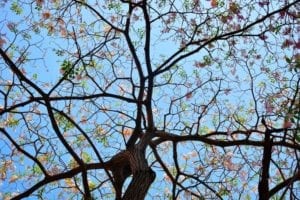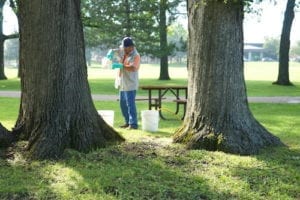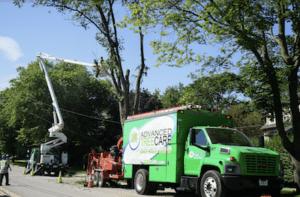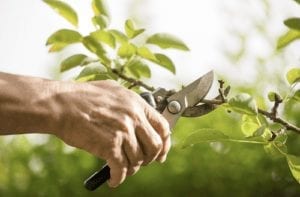Two Types of Advanced Tree Care in Lincolnshire
Just like humans, trees require comprehensive care because they’re complex beings. Because of this, we look at trees through two lenses when it comes to providing services for our customers. Doing so lets us truly cement our reputation as Advanced Tree Care.
Physical Health
When we talk about a tree’s physical health, we’re really talking about how everything about the tree is working well together. When physically healthy, a tree should have an overall healthy appearance from roots to canopy. Its leaves should be thick and green (except, of course, in fall, or if the tree is a variety that has a non-green leaf). Those leaves shouldn’t display bumpy scales, powdery substances, or any other signs of widespread infestation or damage. Unless it’s late in the fall, its leaves should not be showing signs of stress, discoloration, or dieback.

The tree’s canopy should be thriving. While some trees will have dead branches, a physically healthy tree will have no more than 17% dead branches compared with its entirety. The branches and limbs should be free of any disturbances, insect holes, bleeding, peeling bark, mushrooms, or other problems.
The trunk should also be similarly healthy—no loose or deteriorating bark, obvious insect holes, or other signs of stress or decline. At the base of the tree, the root flares should be free of any soils, mulches, and debris. Root flares, especially of mature trees, should be pronounced—meaning you’re able to see them and they crest over the top of the soil.
These details are all the things our experienced staff and certified arborists consult when assessing the physical health of any tree we care for.
Structural Health
A tree’s structural health has to do with the strength and soundness of its overall structure. In a structurally healthy tree, the limbs and branches are free of inclusions, bifurcations, embeds, rubbing, and competing limbs. Though these are terms specific to tree care, the concept is simpler than the words suggest: if your tree’s branches look complete, distinct from another, and are growing healthy and separately, your tree is likely to be structurally healthy. If its branches don’t fit this description, it may be time to consult a certified arborist.
The tree’s limbs and trunk should also have good taper—meaning the limb and each branch start wider and gradually thin out. Branch distribution should be relatively even around the trunk and throughout the canopy, and the tree should be free of bark disturbances.
An array of factors can affect a tree’s structural health: age, infestation, disease, weather, and accidents all factor in. So do particularly hot summers and particularly cold and icy winters.
Now that you know the difference between physical health and structural health when it comes to trees, we hope you’ll be looking at the trees in your yard with new eyes. And if you notice anything that raises an alarm, be sure to call on a certified arborist to assess the health of your tree.
Advanced Tree Care combines top-notch equipment, cutting-edge technology, and well-trained staff to provide emergency tree removal and tree maintenance services. With a presence in nine counties and two states, we work daily to provide unparalleled customer service, safety, and efficiency—as well as the expertise to beautify your landscaping and community. Advanced Tree Care isn’t just our name—it’s also our purpose!




